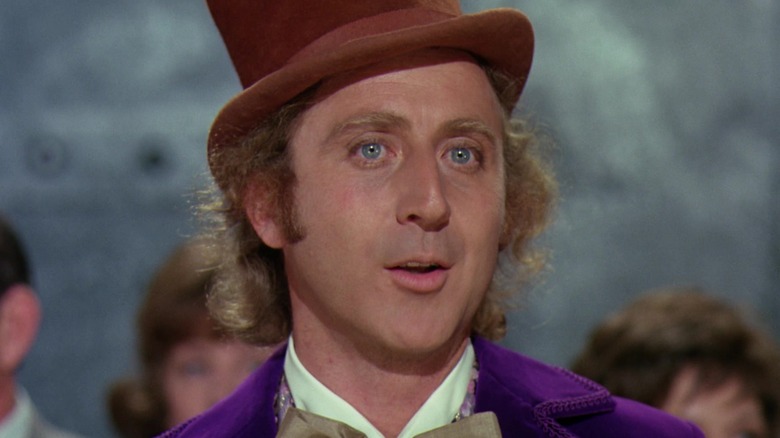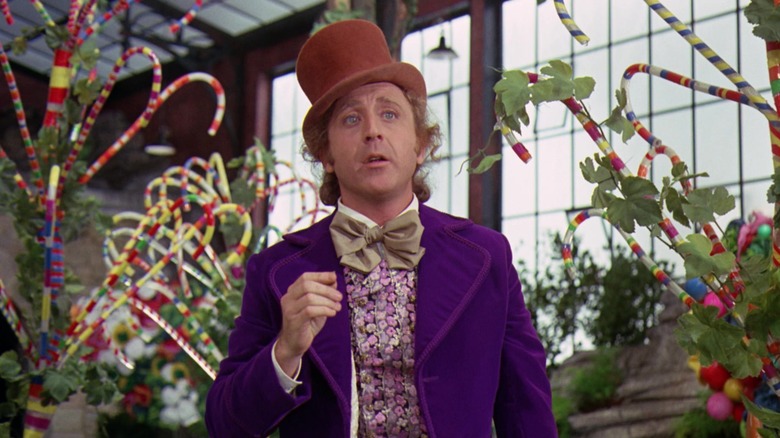Gene Wilder's Notes To Mel Stuart On Willy Wonka's Costume Show How Much Thought He Put Into The Role
There are fewer things more comforting than revisiting a film you watched many times as a kid, and breathing a sigh of relief when it still fills you with that warm sense of magic. "Willy Wonka and the Chocolate Factory" is one of those films. It may have been over 50 years since the world was introduced to Gene Wilder as the titular candy man, but his performance has lost none of its magic. I've seen folks joke about how the film plays like a horror movie for families, and while you could quantify it as such, the fact that it's been read this way only speaks to how brilliantly erratic Wilder's performance is.
You have to remember that, despite "Willy Wonka" being in the title, Wilder doesn't show up until about 40 minutes in, when he exits his candy factory to meet the five lucky children. He walks out with a grumpy misdemeanor, while limping on one leg. Wonka plays the audience like a fiddle, as he keeps the act up until the faux tumble that gets everyone on their feet again. Wilder understands the appeal of introducing Wonka as a showman of all trades.
You never quite know what Wilder is going to do next, but chances are it will be captivating. He can switch tones at the drop of a hat, and you still won't be able to tell if it's genuine or he's merely having fun at his guests' expense. In addition to his performance, that kind of spontaneous unpredictability can be seen in his costume, which Wilder himself helped bring to life.
A wardrobe fit for a candy man
According to a 2016 report from Entertainment Weekly, Gene Wilder was sent sketches by "Willy Wonka" director Mel Stuart to look over. In response, he personalized a letter with notes of his own for what he thought the candy man's wardrobe should look like. When it came to the eye-catching purple velvet jacket, he suggested pockets in case of props.
Other notes included trimming 2 inches off of the top hat, as well as requesting that Wonka's pants resemble a more desert sand hue than the mucky green they almost had. One portion of the letter gets to the heart of how deeply he's in tune with his character:
"I don't think of Willy as an eccentric who holds on to his 1912 Dandy's Sunday suit and wears it in 1970, but rather as just an eccentric — where there's no telling what he'll do or where he ever found his get-up — except that it strangely fits him: Part of this world, part of another. A vain man who knows colors that suit him, yet, with all the oddity, has strangely good taste. Something mysterious, yet undefined."
The irrationality of Wonka's costume falls in line with his unpredictable nature. The top half serves the astonishing flair of a man with a fantasy factory at his disposal, while the more restrained bottom half falls in line with a more business casual look. The purple velvet tying it all together is regal, yet a facade of sorts for the slightly disillusioned artist. Wonka can play both sides of the coin rather beautifully, and Wilder knew how important it was to nail this aspect down.
"Willy Wonka and the Chocolate Factory" is currently streaming on HBO Max.

